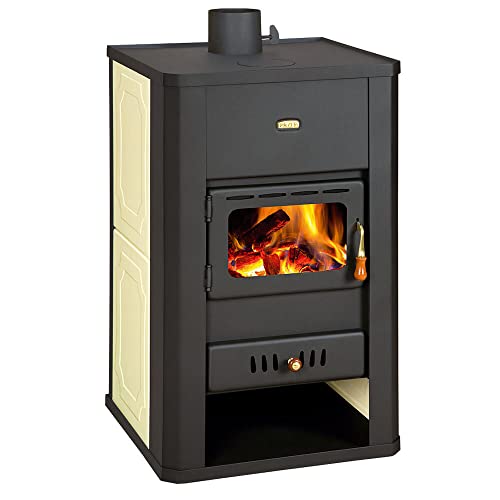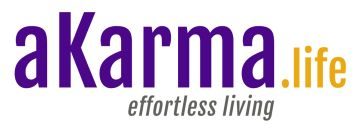Guide To Multi Fuel Boiler Stove: The Intermediate Guide The Steps To Multi Fuel Boiler Stove
 Multi fuel boiler stoves are engineered to burn a wide range of logs, smokeless fuel and coal. They can be linked to your heating system to save money.
Multi fuel boiler stoves are engineered to burn a wide range of logs, smokeless fuel and coal. They can be linked to your heating system to save money.
When burning coal, the grate needs to be removed to allow air to enter the fire from below. Some multi-fuel stoves come with a riddling grates and asphans to make this process simpler.
Energy Efficiency
A multi-fuel stove can burn a variety of different types of solid fuels, including peat and turf Briquettes, smokeless coal, and anthracite. They can also burn logs. They are more versatile than wood-burning stoves because they can be used with a variety of fuels.
Modern Ecodesign-compliant stoves have 80percent or more overall efficiency. They can help meet the SAP energy needs by generating low CO2 emissions. A lot of homes in the UK make use of a wood-burning multi fuel stove 5kw fuel stove to heat their living rooms and also have a central heating system (either gas boiler or hot water cylinder) as the primary source of primary heating. It is typically complemented by a secondary type of heating such as an air or convection hot water stove.
The efficiency of the stove is important, as it reflects the amount of heat that is delivered to your home. It is not to be confused with the combustion efficiency which is the figure that appears on the side of the stove. The combustion efficiency relates to how efficient the stove was in a laboratory test. It does not reflect the efficiency of the entire system of chimney, stove and fuel. It is not comparable to System Efficiency which is the number that should be quoted.
In their marketing materials, stove manufacturers frequently refer to the efficiency of combustion instead of System Efficiency. This is not accurate. System Efficiency is not a measurement of the performance of the stove in a lab test. It is a calculation based on the total emissivities of the stove and fuel in the home.
Note that the TE of a particular combination of fuel and stove is based on the volatile matter content of the solid fuel, because this will determine if particulate-bound pollutant (e.g. The PM2.5, EC, and BaPeq ) are released by the fuel during ignition or are retained in the pyrolysis phase. When the volatile matter is retained during the pyrolysis stage it releases carbonaceous aerosols that are not efficiently bound, and therefore contribute to total emissivities.
Low Maintenance
Non-catalytic stoves need less maintenance and are more user-friendly than catalytic stoves. They are less expensive and have a preheated burning system to increase the performance. They can burn a wide variety of solid fuels, Multi Fuel Boiler Stove including smokeless coal, and include an adjustable primary air control that permits you to alter the speed of the fire burning. This will help you create an efficient fire, with better flame distribution and less emissions.
You’ll need to refill your stove every 10-14 hours, based on the way you use it. It is also necessary to empty the ash pan often. If you’re using smokeless coal, this requires particular attention as the ash must be riddled to prevent it blocking the air passages for combustion and starving the fuel of oxygen. This can be done using a simple tool that resembles the pitchfork.
BTU ratings, which indicate the amount of heat required to boil one liter of water is a good indicator of how strong a multi fuel stove ebay fuel stove is. However, they shouldn’t be the only specifications you look at when comparing models. Other factors such as the size of the burner and weight can have just as big an impact on overall performance.
Many modern multi fuel stoves can be used with a broad range of liquid fuels, including white gas, isobutane and Kerosene. This makes them ideal for backpacking trips, particularly in remote areas where canister fuel might not be available.
Multi-fuel liquid-fuel stoves are usually equipped with a regulator that lets you manage the amount of fuel used. They’re also more efficient than stoves using canister fuel, and they perform well in cold temperatures as well as at high altitudes.
Some multi fuel stoves can be combined with wood, allowing you to become self-sufficient, reducing your dependence on fuel purchased. It is crucial to remember that the use of a wood-burning stove along with multi-fuel stoves can result in more harmful emissions. This is not recommended unless you take the appropriate precautions.
Thermostat Control
When it comes to multi-fuel stoves, a boiler stove is the ideal option for those who would like the stove to heat their water and their living space. The boiler stove can heat a tank of water within the stove, or be connected to an central heating system made of gas or oil system to boost its heating capacity. These kinds of stoves can also be utilized in smoke-controlled zones because they can burn a variety of solid fuels.
Modern stoves feature thermostat controls that allow the user to adjust the amount that is burned. This is then controlled by the amount of heat produced. This feature can save money by ensuring that the most efficient amount of heat is generated from each fuel piece.
 Boiler stoves work with a range of fuel types like peat, wood and smokeless coal. The majority of multifuel stoves allow you to select between various fuels when creating an open flame. This is because different kinds of fuel require slightly different airflow for proper combustion.
Boiler stoves work with a range of fuel types like peat, wood and smokeless coal. The majority of multifuel stoves allow you to select between various fuels when creating an open flame. This is because different kinds of fuel require slightly different airflow for proper combustion.
Smokeless coal, for example requires combustion air from below, and most multi fuel stoves will include an open or partially open riddling grate that can let this air pass through. This grate should be cleaned regularly to avoid ash buildup, which can cause the fire die.
All multifuel stoves are able to transfer some of the heat they generate into a domestic water heater, regardless of whether they are boiler stoves or not. The amount of hot water a stove is able to provide will vary depending on the model. However, generally they can power up to eight standard-sized radiators. Some models, like the Stovax View 8 are able to achieve this feat with the capacity of 4.9kW for the room and 8.2kW for the boiler. This will be enough to heat the majority of domestic sized radiators.
Smoke-Controlled Areas: Suitable for this product
Multi fuel stoves are a fantastic option for those who live in areas that have smoke control because they can be used to burn a variety of non-smoking fuels. This means that you do not have the necessity to store and transport logs or briquettes, which aren’t always available, or go further afield to purchase these items. Multi-fuel stoves look more contemporary than their open fire counterparts and are available in a range of sizes that can be fitted to homes with various designs for interiors.
These kinds of stoves are known as DEFRA Approved or exempted solid fuel appliances and are tested to ensure they meet strict emission limits particularly when burning smokeless fuels. These stoves are perfect when you reside in a place that has a lot of smoke-producing structures. They will limit the amount of black smoke produced by your heating system.
A DEFRA-approved stove can be used to burn a variety of solid fuels including anthracite or smokeless brquettes. However, some types of fuel are not able to be burned in any way, and it’s illegal to use certain types of fuels without the possession of an exemption certificate for smoke control.
Depending on the model, this kind of stove can be adapted for gas or oil sealed heating systems, as well as underfloor heating. They could also come with a system to allow them to be linked with solar panels and other renewable energy sources, again dependent on the particular model.
A multi fuel stove is usually fitted with a glass window that allows you to view the fire and the flue through which the combustion gases are drawn out and expelled from the appliance. It also has an open fire grate which you can place your fuel on and the air supply to the flames is controlled via an adjustable slider positioned at the bottom of the stove’s door. Some models also feature a secondary or tertiary air flow system to introduce pre-heated secondary or tertiary air into the combustion chamber at a height above the fuelbed. This helps reduce emissions by burning unburned hydrocarbons in the smoke before it is blown upwards into the chimney system.

